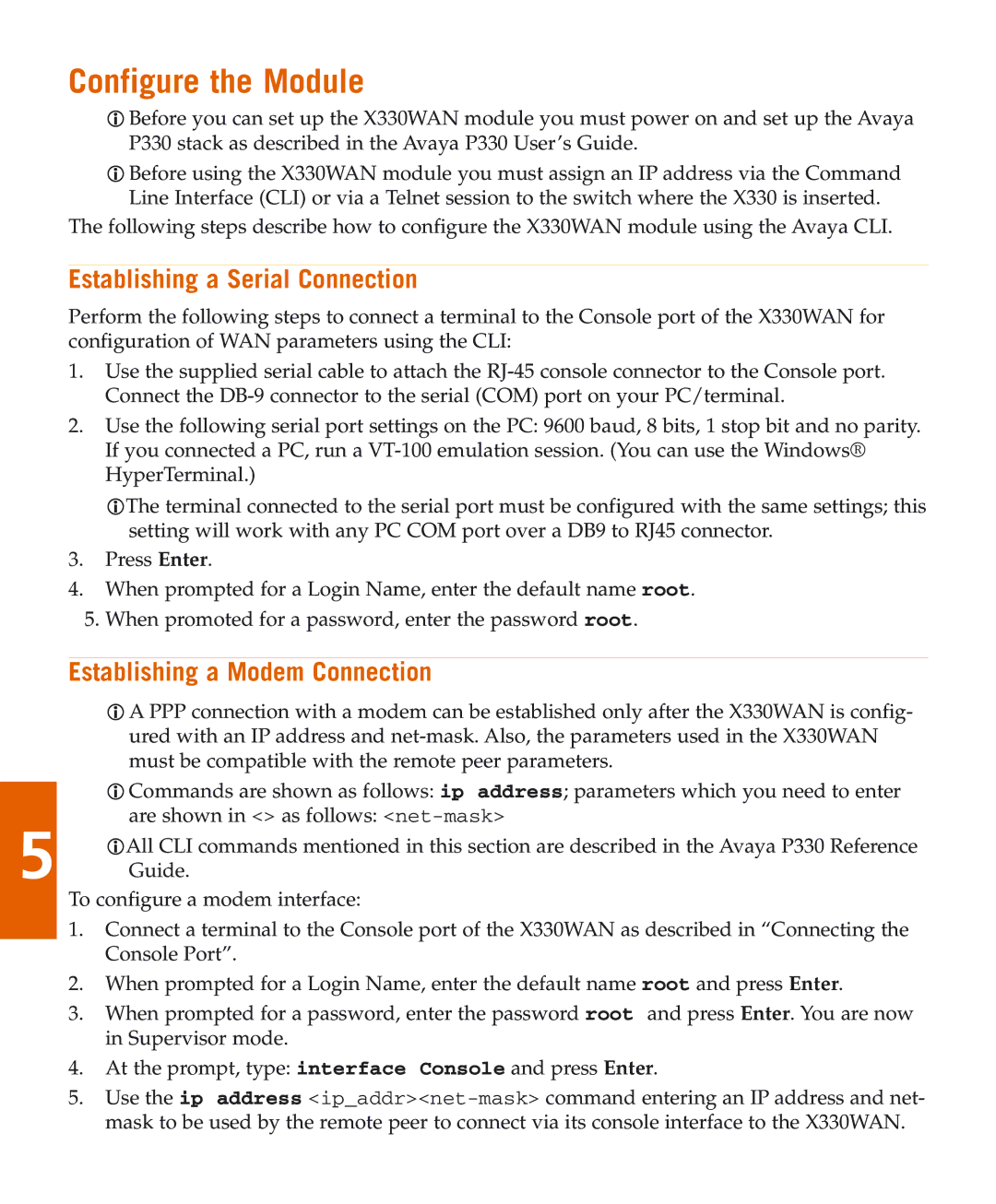X330W-2DS1 specifications
The Avaya X330W-2DS1 is a powerful wireless access point designed to meet the growing demands of modern network environments. With its robust technology and versatile capabilities, it stands out in the competitive landscape of enterprise networking solutions.One of the key features of the Avaya X330W-2DS1 is its dual-band functionality. Operating on both the 2.4 GHz and 5 GHz frequency bands, it allows for flexible deployment options and better overall performance. This dual-band capability significantly reduces network congestion and improves user experience by allowing devices to connect on the less crowded 5 GHz band, thereby enhancing the speed and reliability of wireless connectivity.
In terms of wireless technology, the Avaya X330W-2DS1 supports the latest Wi-Fi 6 standards. This advanced technology provides increased capacity, improved efficiency, and lower latency, making it perfect for high-density environments such as offices, universities, and public spaces. With Wi-Fi 6, the access point can handle more simultaneous users and devices, which is crucial in today’s world where the number of connected devices continues to rise.
The Avaya X330W-2DS1 also features advanced security protocols to safeguard network communications. It supports WPA3 encryption, which provides enhanced security over previous standards. This is particularly important for enterprises that handle sensitive data and require robust security measures to prevent unauthorized access.
Another notable characteristic is the Intelligent Traffic Management feature. This allows for optimal allocation of bandwidth to different users and applications, prioritizing critical business functions while ensuring fair access for all connected devices. The access point can intelligently identify the types of traffic flowing through it, helping to improve the overall user experience.
Additionally, the device offers easy deployment and management through Avaya’s cloud-based management system. This allows IT administrators to monitor the performance of the access point remotely, simplifying troubleshooting and maintenance tasks.
Overall, the Avaya X330W-2DS1 combines advanced wireless technologies, exceptional performance, and robust security features, making it a valuable asset for any organization looking to enhance its network infrastructure. Its scalability and ease of management further solidify its position as a top choice for businesses aiming to stay ahead in a rapidly evolving digital landscape.

